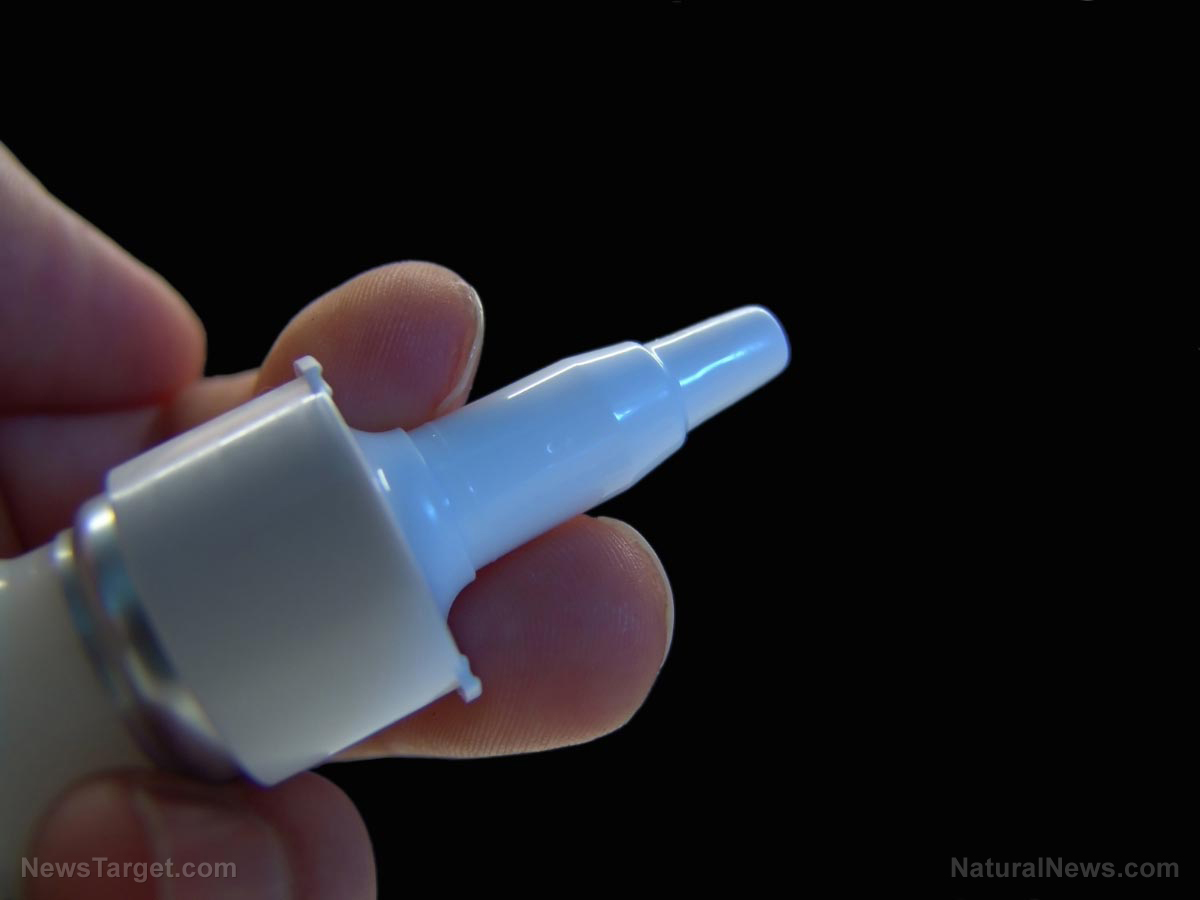Vaccine-pushing scientists now arguing that the CDC should promote the inhaled nasal flu vaccine even though it doesn’t work
05/01/2017 / By Vicki Batts

The nasal spray flu vaccine, FluMist, came under fire not too long ago due to its lack of effectiveness. The Centers for Disease Control (CDC) itself said that between the years 2013 and 2016, the spray vaccine offered very little in the way of protection against flu — and during the 2015-2016 year, the vaccine provided no protection to kids aged 2 to 17 at all.
Following this revelation, the CDC chose to recommend in summer 2016 that the spray vaccine should not be used for the upcoming winter. And as the National Vaccine Information Center (NVIC) has reportedly pointed out, in addition to not providing protection, because FluMist contains a live attenuated virus, it also can cause vaccine strain infections and shedding. In other words, while it may not protect people from the flu, it could very well cause influenza infections in recipients or those who come into contact with them shortly after they’ve received the spray vaccine.
So not only is it ineffective, the vaccine could potentially cause more cases of flu than it prevents. But now, researchers are saying that the federal agency’s recommendation against using the nasal spray vaccine could cause more cases of flu, should the vaccine suddenly become effective again. Apparently, scientists are also guilty of “magical thinking” and believe that somehow, a vaccine that’s consistently not worked well over a period of years will randomly become effective. (RELATED: Learn more about the pitfalls of vaccine science at Vaccines.news)
A team of scientists from the University of Pittsburgh Medical School say that their recent analysis indicated that the CDC’s recommendation to not offer the nasal spray “could lead to more flu illness in the U.S. if the inhaled vaccine becomes effective again or if not having the choice of the needle-less vaccine substantially reduces immunization rates.”
The power of the elements: Discover Colloidal Silver Mouthwash with quality, natural ingredients like Sangre de Drago sap, black walnut hulls, menthol crystals and more. Zero artificial sweeteners, colors or alcohol. Learn more at the Health Ranger Store and help support this news site.
The researchers are part of the Pittsburgh Vaccination Research Group, also known as “PittVax” for short, and they are one of the few teams in the US who track cases of influenza in people who did or did not receive a vaccine.
Science Daily reports, “Under current conditions, only offering the needle-delivered flu vaccine results in 20.9 percent of children ages 2 to 8 getting the flu, compared with 23.5 percent if both the needle and nasal vaccine are offered.” In other words, as it stands more children will get sick if both traditional needle vaccines and nasal vaccines are administered, but for some reason, these researchers still believe that the mist vaccine could be of use. According to them, other countries have not experienced the same lack of efficacy as is seen here in the US.
“It is possible that future research will find ways to make LAIV [the nasal spray vaccine] more effective in the U.S. again, in which case the CDC recommendations will need to be reexamined, ” the study’s lead author Kenneth J. Smith, M.D., M.S.,, who is also a professor of medicine and clinical and translational science at the university.
According to Smith, it would only take “relatively small changes” for the vaccine to become popular again. In order to fall back into the good graces of the pro-vaccine world, it would have to prevent the flu in 63 percent of recipients. The researchers also claim that if vaccine rates were to fall by 18.7 percent or more due to the unavailability of the nasal spray vaccine, it would behoove the CDC to recommend both anyways. This, of course, is problematic because one cannot definitively say more people would get vaccinated if the spray was made available again. And, we again run into the fact that the FluMist vaccine could actually contribute to the spread of disease.
As Green Med Info writer Celeste McGovern explains, people vaccinated with a live attenuated virus, like FluMist (also known as Fluenz) will shed the virus for up to 11 days after administration. It’s no wonder that more people get the flu when this vaccine is given. Flu shots, in general, have consistently been scrutinized for their inefficacy, along with other issues, but this one certainly takes the cake.
Sources:
Tagged Under: Flu shots, nasal spray vaccines, vaccines




















